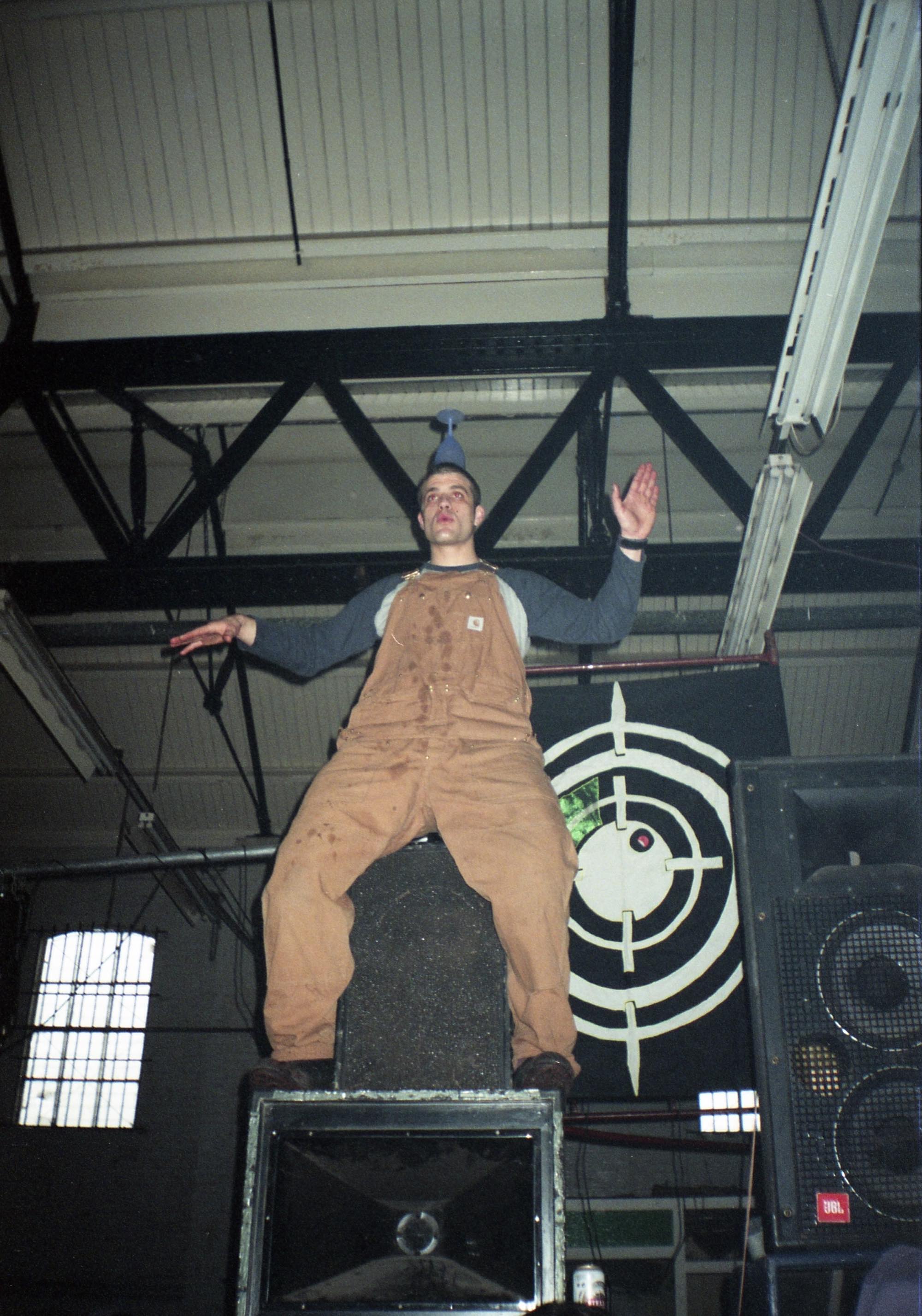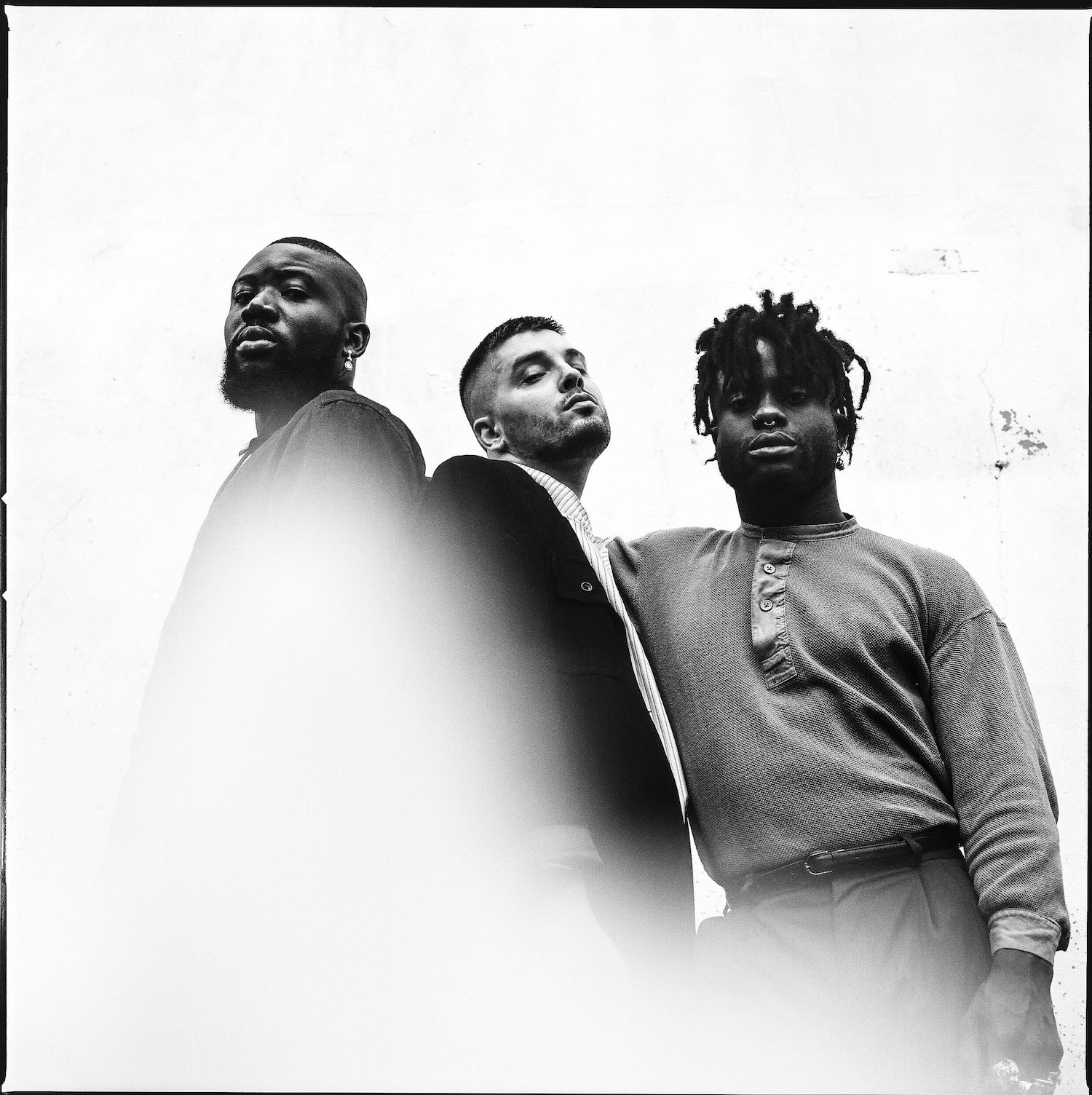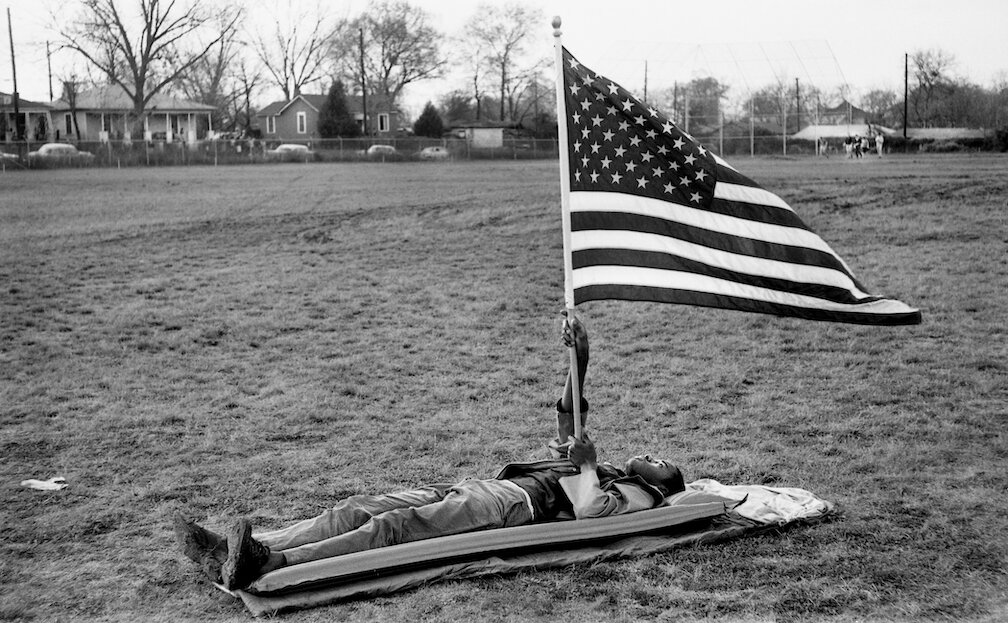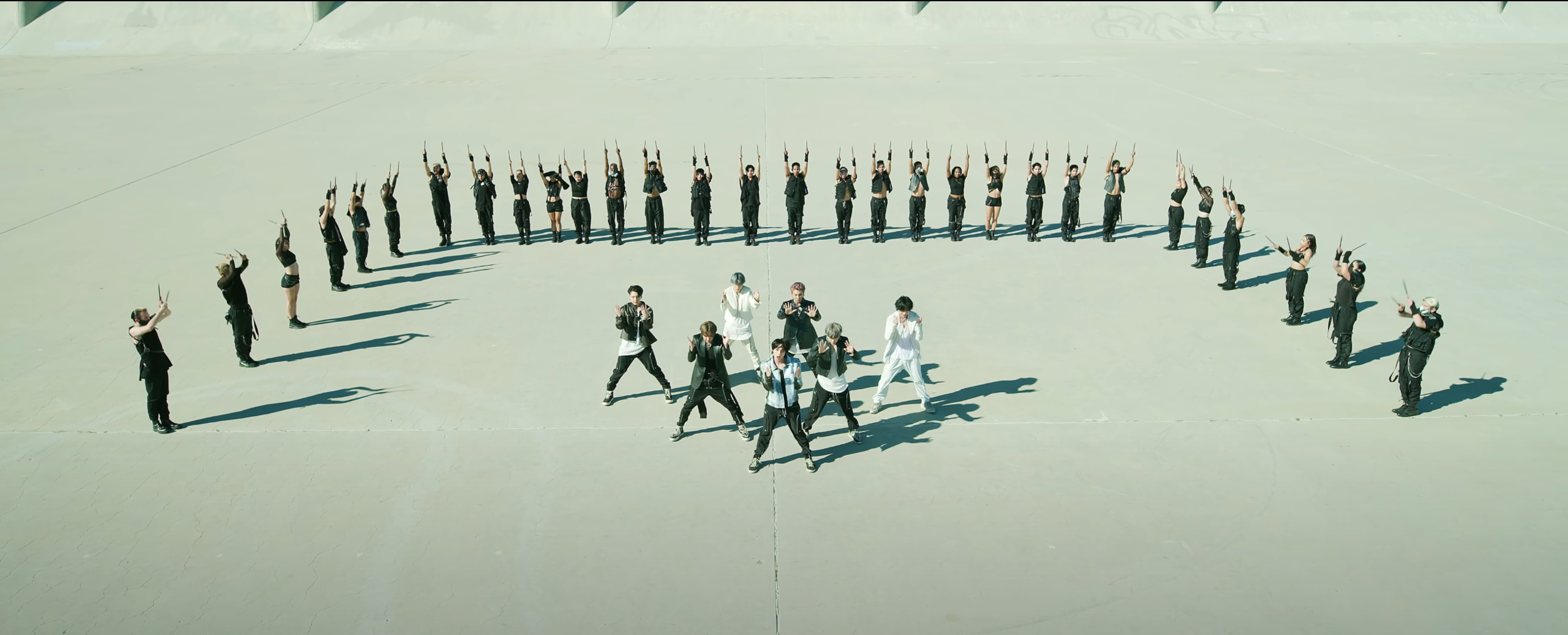Spiral tribe: Utopia Now
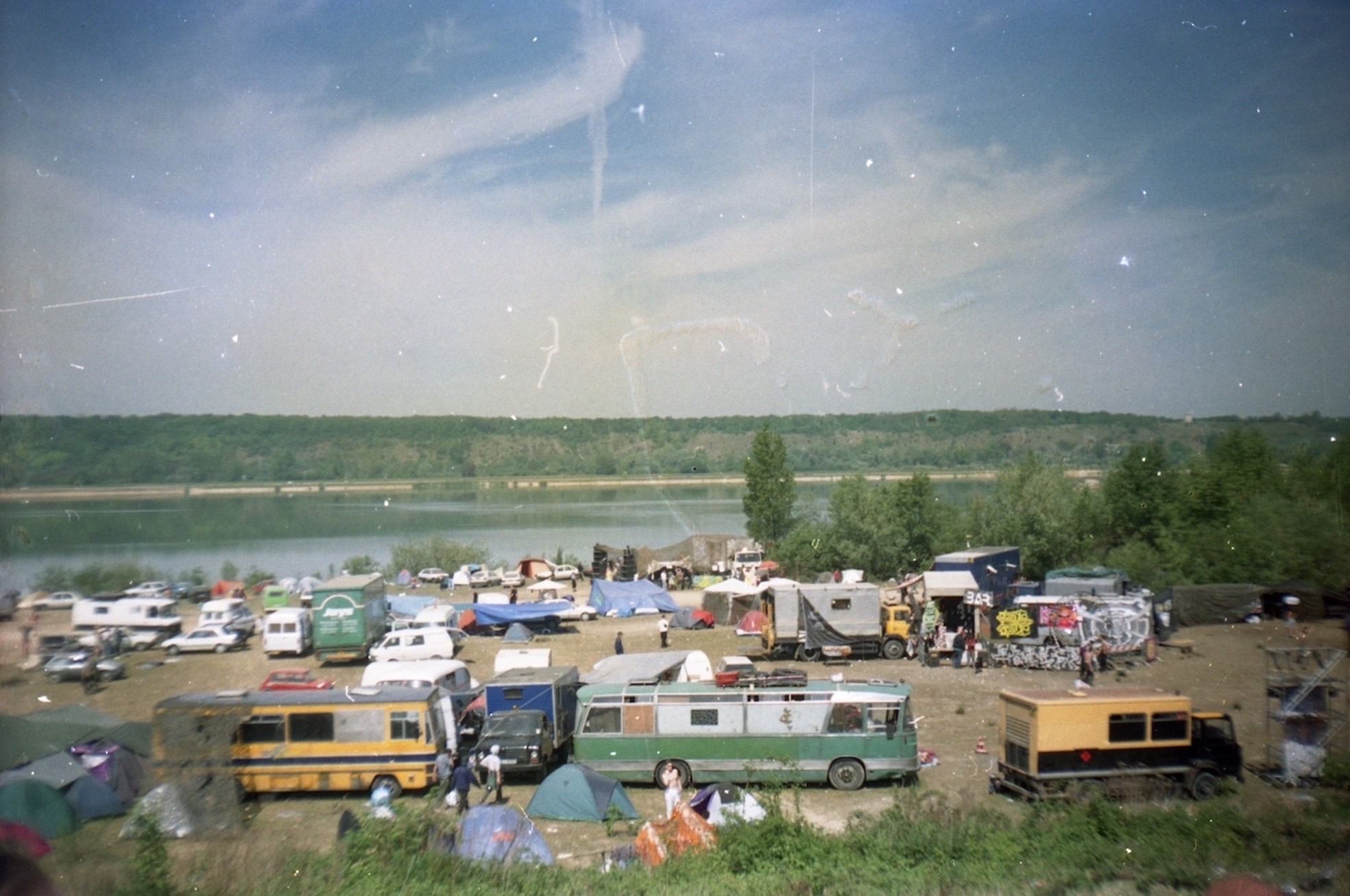
Spiral Tribe were one of the most notorious traveling sound systems of the 90s. A new exhibition of unseen photos, flyers and ephemera examines their legacy
‘Sasha dancing’
Spiral Baby is an exhibition ‘inspired by the legacy of Spiral Tribe, a sound system collective that formed in 1990 and influenced a decade of culture and parties.’ Seana Gavin, a London-based artist, was involved in the free-party and rave scene from 1993 to 2003, and spent months and years crisscrossing Europe with friends in mobile homes, traveling in convoy with the sound systems and attending multi-day ‘teknivals’ in France, Spain, Holland, Czechoslovakia, Berlin and Hungary.
It was a brave and rugged alternative way of life – a nomad nation creating temporary communities in the gaps of contemporary society, united by the pounding kick-drum of hardcore techno. Good Trouble spoke with Seana about why she felt the time was right to show these photos, flyers and diary entries, and what a new generation might learn from these pioneering hedonists.
What was it that first attracted you to this scene?
I was underage when I started going to London squat parties in 1993. I regularly attended a club on old street called Whirl-Y-gig. The night would finish early at midnight so a group of friends started taking me along to raves afterwards. The majority of my mates at the time lived in squats and were all into an alternative lifestyle. I was immediately hooked and it became my weekend ritual and very quickly my life started to evolve around the 24-hour party life. I became friends with a lot of the sound systems that put on the events.
“I think what attracted me to this scene was the freedom, it was something outside of normal society.”
I think what attracted me to this scene was the freedom, it was something outside of normal society. I had always been rebellious in nature to authority, rules and a spoon fed way of thinking. Coming from a very open-minded creative family, it was natural for me to connect to an unconventional way of being.
Czechtech, 2000
What made you decide now was the right time to exhibit these photos and materials?
It's been over two decades since some of these photographs were taken. I moved away from the scene after the tragic loss of my best friend Ben who died during a party in France. Followed by a string of other deaths, the scene started to have negative connotations for me. As much as I had loved being in that world, my life was ready for a different direction. I had kept a lot of the photographs in albums and stored away the negatives safely. And for sentimental reasons, I couldn’t bring myself to throw away the flyers. But I emotionally buried a lot of it and kept it in the past.
“I wanted to share my lived experience. Especially at this time when there is a lot of general interest and nostalgia for 90s culture and political issues challenging Europe and borders.”
Enough time has passed now. I am making peace with that period of my life and embracing the positive sides of it. Now that I am so removed from it, I realise more and more what an unusual, relevant, innovative, special movement it was. And as there isn’t a massive amount of documentation from that scene and those parties, I wanted to share my lived experience. Especially at this time when there is a lot of general interest and nostalgia for 90s culture and political issues challenging Europe and borders.
Holland, 1996
At those early parties, cameras were a bit frowned on. How and why did you find yourself documenting?
I guess for me it was different, as I wasn’t just a regular punter or raver. I was friends with the people who put on the parties and more immersed in the scene. I wasn’t a photographer or journalist – I was part of this movement and these people were like family to me. I spent long periods of time travelling in friends’ mobile homes in convoy with the sound systems across Europe. So, really it was as acceptable as me taking photos of friends on a night out. At the time, I felt if I didn't document, it would have been lost. It would have all been a hazy blur through the drugs and music.
What’s your most abiding memory of some of these parties?
The first party was a small Spiral Tribe party in West London. I danced non-stop all night and probably interacted with everyone in the room. It felt like we were all united somehow. I remember with early parties especially there was such a good vibe and energy. It felt like we were part of something new, fresh and exciting.
“It felt like we were all united somehow. I remember with early parties especially there was such a good vibe and energy. It felt like we were part of something new, fresh and exciting.”
Obviously, with the illegal aspect, it meant it also attracted characters you wouldn’t always want to mix with, so there was sometimes an edginess that came with that. Later, some of the London parties had quite a dark, post-apocalyptic feel, but I kind of embraced that. The outdoor ‘teknivals’ in Europe didn’t feel that way. Something about being in the open air changed the energy. It was also more of a way of life in Europe – the parties sometimes lasted for five days.
One particularly memorable party was Hostomice Teknival in the Czech Republic, 1996. There were several sound systems there, including the Spirals. I felt on top of the world. I remember thinking, “This is what I have been waiting for. It’s the one. This is what I live for.”
New Years aftermath, abandoned factory, Rome, 2002
In an era when many young people are discovering anti-establishment lifestyles, activism and protest, what lessons do you think people can learn from Spiral Tribe?
London, 1999
One of their well-known slogans being “Make Some Fuckin’ Noise”, I would say the message is: don’t give up and speak your mind. It’s important to question your beliefs, the system, the media, society and the way news is fed to you.
They were about rejecting conventional life. The scene did attract a lot of fast-living, hedonistic people, but there was also a sense of the idea of building a free, utopian community. The parties and those involved were non-commercially driven. Which should be a positive influence to the current younger generations. It was a world where Instagram and consumerist ideologies that dominate a lot of modern culture didn’t exist. And I think all of us that remember that era look back with fondness. A lot of the parties' locations were shared simply through word of mouth and a secret party phone line.
I think it’s great that the current younger generations are becoming more and more politically engaged. It feels like a natural cycle that happens. After my generation, it felt for a while that there was a sense of apathy among youth and they seemed disengaged. So, it’s encouraging to see what is happening now with groups such as Extinction Rebellion.
seana gavin / spiral baby / 07.06.19 - 27.07.19
galeriepcp, 8 rue saint-claude, 75003 paris
galeriepcp.com / @seanagavin / top pic: Teknival Courcelles France, 1997
“They were about rejecting conventional life. The scene did attract a lot of fast-living, hedonistic people, but there was also a sense of the idea of building a free, utopian community.”
RIP Bennett ‘Ben’ Child
Author account for the Good Trouble hive-mind.





